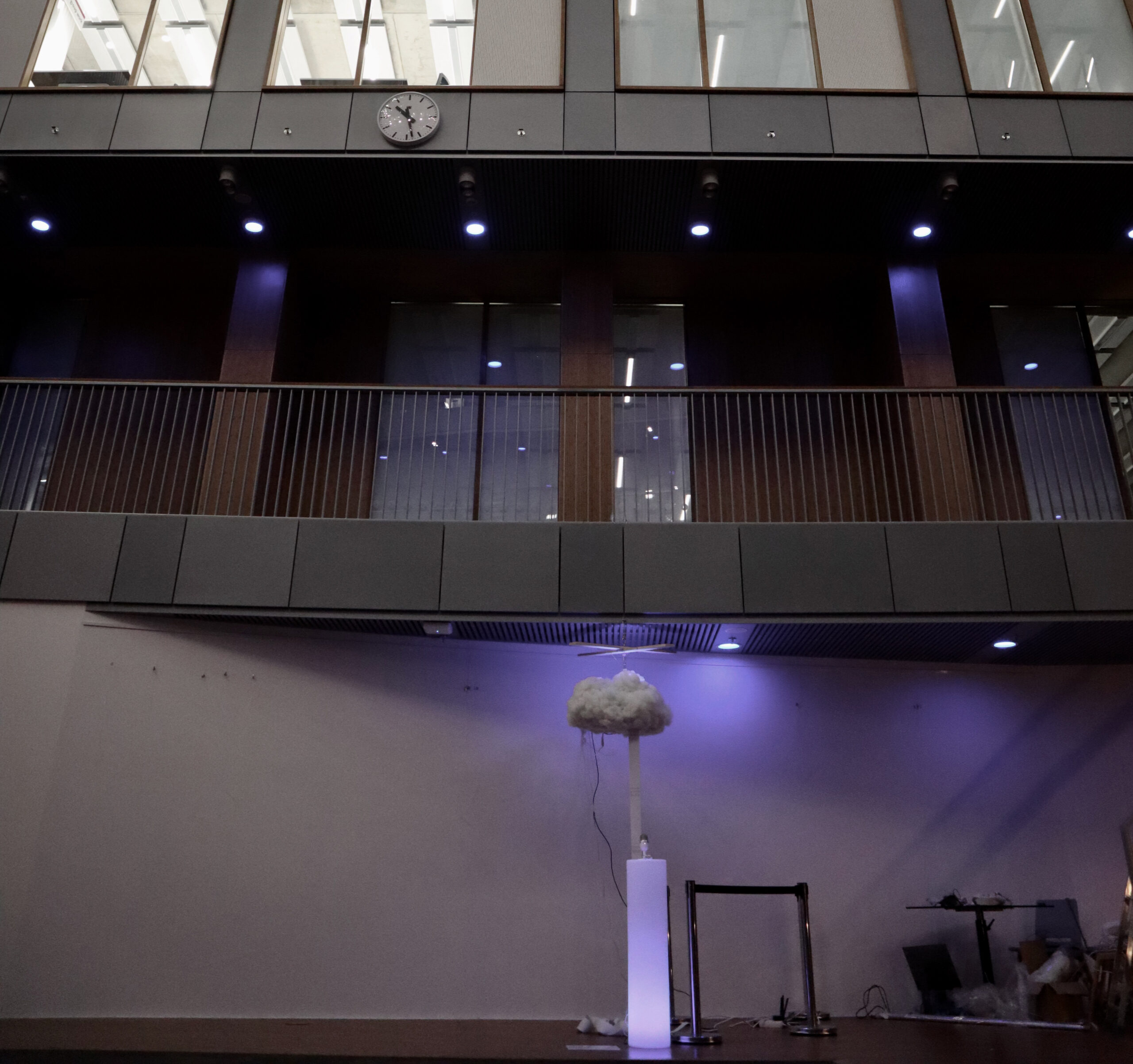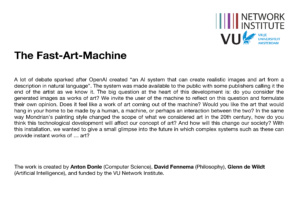How do Technology and Society shape each other? What are the opportunities or threats that Technology brings to Society? What do we need to understand better about the influence that Technology can have on humans, groups, organisations, communities, culture, or religions?
At the Network Institute we strongly believe that art is a key instrument for better understanding/reflecting on the Digital Society. As such, art can help researchers in framing questions that are difficult to formulate, and in finding their scientific answers. Complementarily, art is a direct means for researchers to create and showcase their creativity and inspire/provoke people on the deep questions at the heart of the Digital Society.
The Network Institute promotes and funds art installations related to the Digital Society. Art installations can take any form and can discuss any aspect at the intersection between technology and society, and the impacts of technology on human life, society, and culture.
Our art installations
(re)think the role of smart sensors in the digital age
There are smart cameras all around us in the public space. From the police, the city government, big and small companies, and from residents. We may have become used to them by now and feel safe because of them. But these camera’s analyse us with artificial intelligence. And they store these analyses somewhere with a specific purpose. ‘(re)think the role of smart sensors in the digital age’ questions this development. The video installation explores the space between what smart cameras currently do and what they might do in the near future. By doing so we encourage ongoing conversations. How do we want smart surveillance to evolve? Immerse yourself in the installation, talk about it with fellow students and university staff, and let your voice be heard! [Read more]

The Fast-Art-Machine
A lot of debate sparked after OpenAI created “an AI system that can create realistic images and art from a description in natural language”. The system was made available to the public with some publishers calling it the end of the artist as we know it. The big question at the heart of this development is: do you consider the generated images as works of art? We invite the user of the machine to reflect on this question and formulate their own opinion. Does it feel like a work of art coming out of the machine? Would you like the art that would hang in your home to be made by a human, a machine, or perhaps an interaction between the two? In the same way Mondrian’s painting style changed the scope of what we considered art in the 20th century, how do you think this technological development will affect our concept of art? And how will this change our society? With this installation, we wanted to give a small glimpse into the future in which complex systems such as these can provide instant works of … art? [Read more]

Phasescope
A phasescope (or goniometer) plots an audio signal on a two-dimensional area by displaying the amplitude of one audio channel on the x-axis, and the other channel on the y-axis. We achieved this by sending audio signals into two motors, which rotate two small mirrors. A laser shines onto the two mirrors, one steering the beam along the horizontal, the other on the vertical axis. When sending a simple sine wave into both channels, the scope will display a straight line, as the amplitudes of the x and y-axis increase and decrease in synchrony. In this case, only the relative volume of the signal is visualized. If we now delay the signal in one of the channels by a fixed number of milliseconds, we get a very different result. As one channel lags behind the other, the laser beam no longer moves in a straight line, but in an oval shape. The exact shape of this oval depends on the frequency of the sine wave. With more complex audio from an analogue synthesizer, the phasescope will create intricate shapes and patterns, created by the interferences between different wave shapes and frequencies. [Read more]

Append Us Apart
The use of Large Language Models has exploded since OpenAI provided access to their ‘ChatGPT’ model. This created a big wave of glorification of the model, but also criticism: makers were not transparent enough about the development process, the environmental impact is vast, users could attribute human features to the output and some questions about moral and legal implications remain unanswered. In ‘Append Us Apart.’, the visitor is asked to handle text generators in a different context and form than from their private devices. The visitors make a (displaced) collective effort into creating a physical, permanent form of their Questions and Answers. Should you leave your piece as part of this collaborative effort?
Do you see yourself reflected in the output? How does it make you feel? [Read more]





